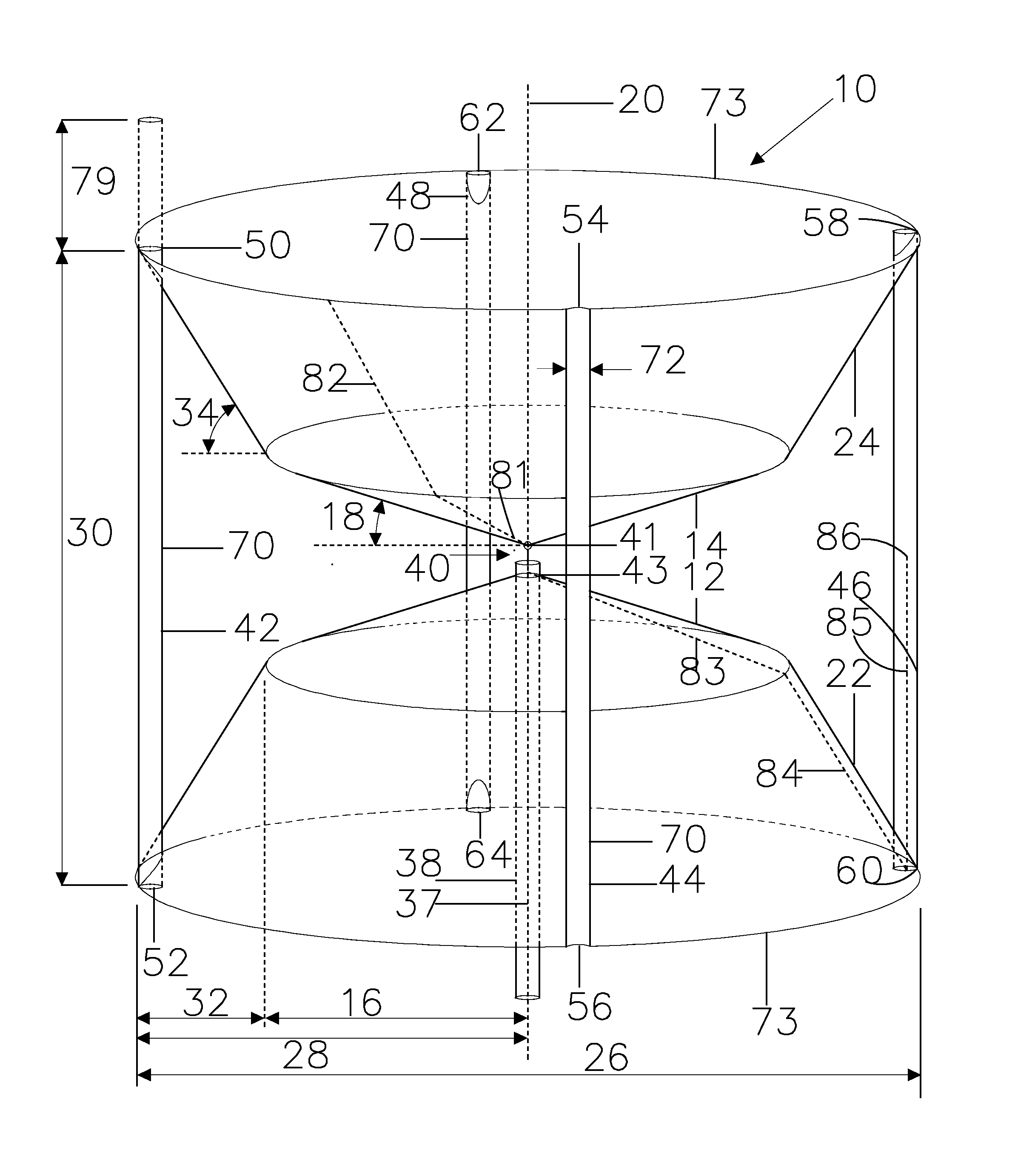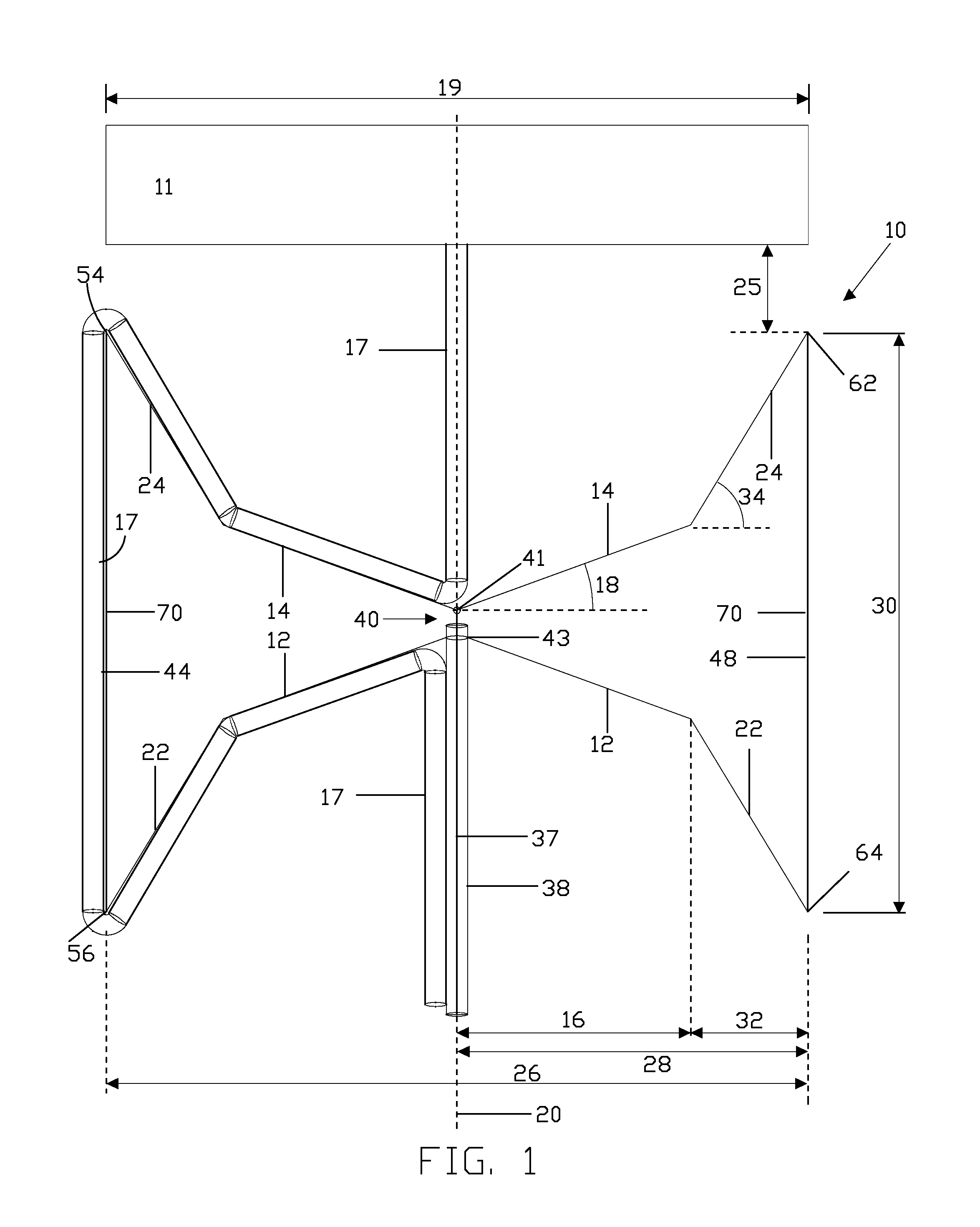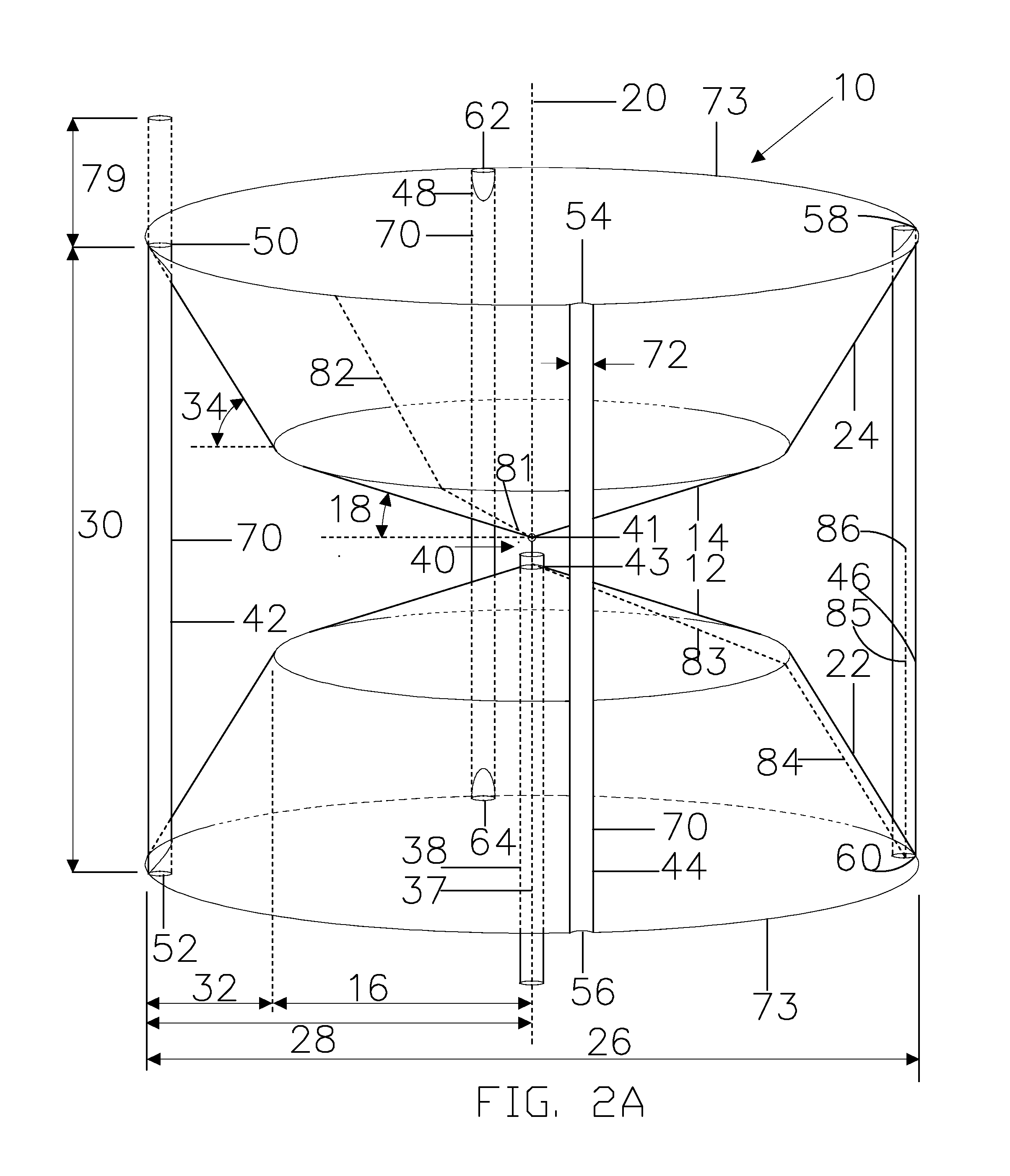Inductively shorted bicone fed tapered dipole antenna
a dipole antenna and bicone technology, applied in the field of bicone and dipole antennas, can solve the problems of not allowing the rotation of the second element 90 degrees, the frequency location and combining of the and the complexity of the type of impedance. to achieve the effect of prolonging the low frequency response of the shorted bicone antenna
- Summary
- Abstract
- Description
- Claims
- Application Information
AI Technical Summary
Benefits of technology
Problems solved by technology
Method used
Image
Examples
Embodiment Construction
)
[0059]In order to improve the low frequency response of the antenna, the cut-in frequency of the shorted bicone should be lowered. A simple solution is to scale the antenna size according to the new cut-in frequency, which would increase its diameter and height. However, the diameter cannot be increased since it is fixed at the maximum inner diameter of the antenna's radome, which is defined as a physical structure which covers and protects the antenna. The radome can take on any shape and for the preferred embodiment it has a cylindrical shape with a curved inner surface and a hemispherical cap.
[0060]Even with a fixed diameter, the height could not be increased since an increase in height would increase the feed angle which would cause the antenna characteristic impedance Z0 to increase causing a mismatch. A solution is to convert the bicone part of the antenna into a bicone fed dipole of larger height with factors as noted below. The increased height of the overall larger antenna...
PUM
 Login to View More
Login to View More Abstract
Description
Claims
Application Information
 Login to View More
Login to View More - R&D
- Intellectual Property
- Life Sciences
- Materials
- Tech Scout
- Unparalleled Data Quality
- Higher Quality Content
- 60% Fewer Hallucinations
Browse by: Latest US Patents, China's latest patents, Technical Efficacy Thesaurus, Application Domain, Technology Topic, Popular Technical Reports.
© 2025 PatSnap. All rights reserved.Legal|Privacy policy|Modern Slavery Act Transparency Statement|Sitemap|About US| Contact US: help@patsnap.com



